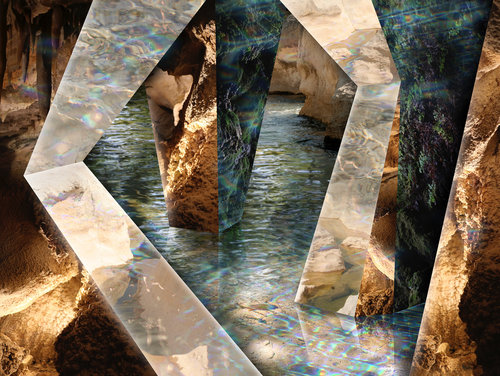by Carolyn Edlund
The title of your art can change or enhance perception.

“Time Passages” digital composition by Leslie Kell. Size varies.
Many artists consider the title to be an integral part of each piece they create. It may reveal what the artist had in mind as they worked on the original. Or it could tell a story in words that accentuates the visual impact of the image. Titles can add a whole new dimension to the experience of seeing art. The viewer may gain insight into what the artist had in mind when the art was created.
Whether a title defines place and time that relates to the image, refers to a historical event or person, or simply adds an emotional punch, it affects those who see, and purchase, art. At times, a title that resonates emotionally can close the sale. It may offer explanation and meaning to our analytical “left brains” as our “right brains” are impacted by the visual nature of the work. Adding a meaningful title deepens the impact of the concept. And it allows for connections that might not otherwise be made.
When collectors purchase art, they often tell the story behind it to others who admire their acquisition. The title is often one of the most important elements in these conversations. It may define, delight or challenge the viewer. Words add value, whether they are embedded in the image itself, or are used in a title.

“Into the Silent Water” digital photo collage by Leslie Kell. Size varies
Artist Leslie Kell bases many of her artwork titles on musical compositions. She recalls, “Someone once told me that they could hear my artwork. This left an impression on me, perhaps enough of one to have become a foundational source of inspiration in my imagery. I guess I’ve always found the phrasing and poetic nature of song lyrics to hold an emotional component for most people. My hope is that the title of the artwork can reach the viewer on yet another level, providing a more enriching experience.”
Kell explains the process behind choosing titles for her digital art, saying, “My works are grouped into collections based the a number of factors— a favorite song, location, concept, design, or other underlying theme. Then each piece is named from a lyrical phrase relating to the collection theme, usually from a single song.”
Many of her collections are steeped in the lyrics of the Grateful Dead, Talking Heads, and Warren Zevon. Her “Box of Rain” collection, inspired by the Grateful Dead, includes titles such as “Feel Your Way Like the Day Before”, “Walk into Splintered Sunlight” and Believe It if You Need It.”
She adds, “A good title will spark imaginations and support your vision, while allowing the viewer a glimpse of your thought process. It adds another layer to the story and deepens the connection to the artwork.”
How do you choose titles for your own art? What do they add to the viewer’s experience?




Very important. I think the title is the beginning of the art, and is how you express the entrance to your art.